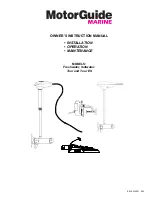20
ispMACH 4000ZE Pico Development Kit
Lattice Semiconductor
User’s Guide
Pushbutton Switch
The board has one momentary push-button switch (S1). You may use the switch as a user-defined input for your
own custom CPLD designs.
Table 15. Push-button Reference
Item
Description
Reference Designators
S1
Part Number
EVQ-Q2K03W
Manufacturer
Panasonic ECG
Web Site
www.panasonic.com/industrial/components/components.html
Table 16. Push-button Pin Information
Button
Description (Pre-Programmed Pico Power)
ProcessorPM Pin
Test Points
In order to check the various voltage levels used, test points are provided:
• R35, VCC (CORE)
• R34, VCCIO of all banks
USB Programming and Debug Interface
The USB B-type Mini socket of the Pico board serves as the programming and debug interface.
JTAG Programming: For JTAG programming a preprogrammed USB PHY peripheral controller is provided on the
Pico board to serve as the programming interface to the ispMACH 4000ZE CPLD.
Programming requires the ispVM System software (
www.latticesemi.com/ispvm
). The programming connection will
appear to the ispVM System software as if a regular parallel-type ispDOWNLOAD™ cable is connected to the PC.
Modifying the Pico Board
The ispMACH 4000ZE Pico evaluation board provides landing areas for additional circuits to support the following
functions:
• Rechargeable Lithium-Ion 20 mA rechargeable battery
• 15x2 Header
Note: Modifying your board requires good electronics handling and PCB fabrication techniques to avoid damage.
Add Support for a Rechargeable Battery
The Pico board can be upgraded to support a Lithium-Ion rechargeable battery. When connected to a PC’s USB
port the battery circuit will recharge the battery cell. Install R23, R26, R42 and Q6 (Figure 11) to provide a 20mA
constant current charge.
15x2 Header
Install a 30-pin header at location J2 – HEADER 15x2 (Figure 10).
Mechanical Specifications
Dimensions: 2 ½ in. [L] x 2 in. [W] x 3/8 in. [H]
S1
Pico board reset
H11


















